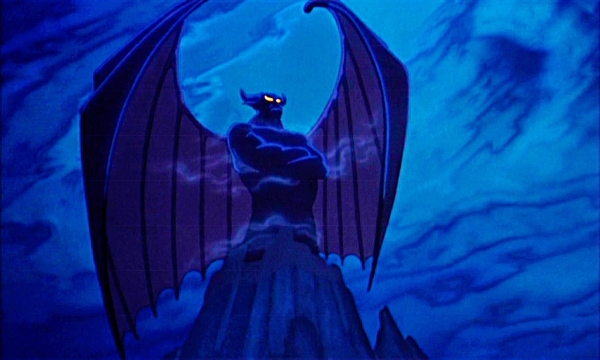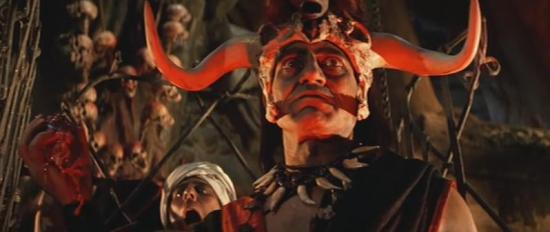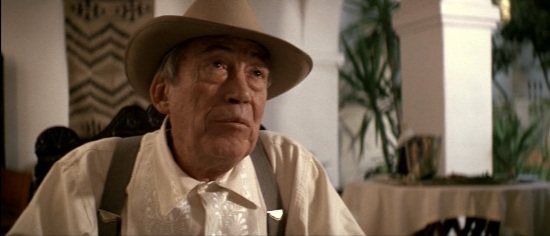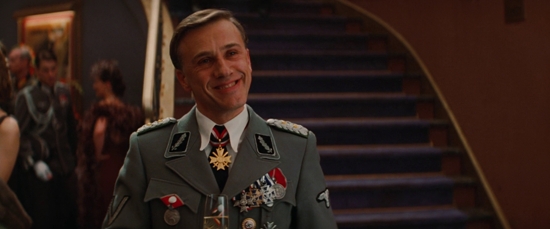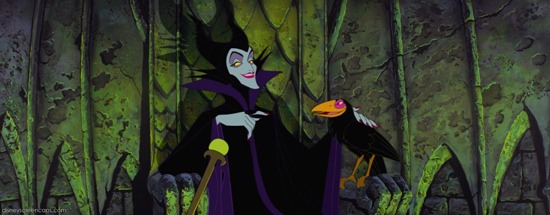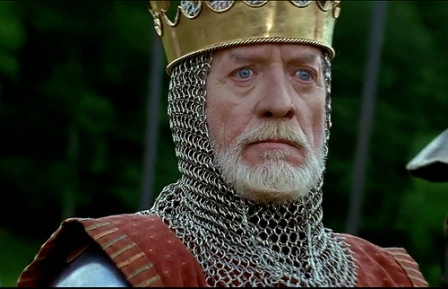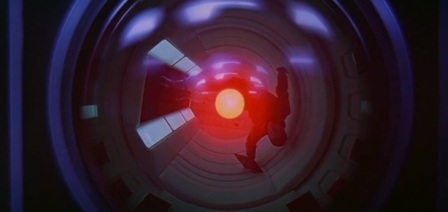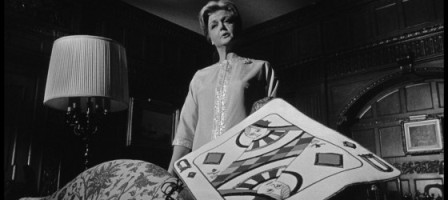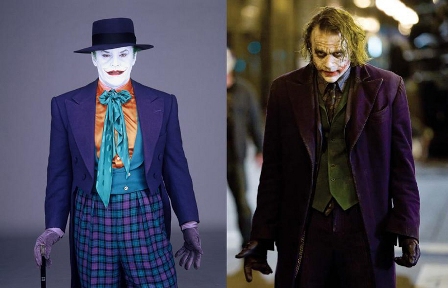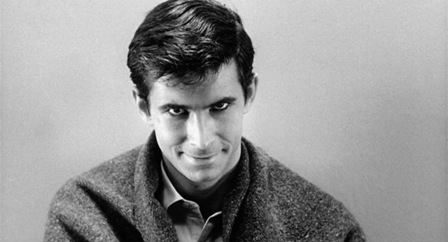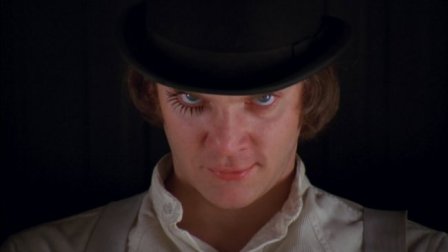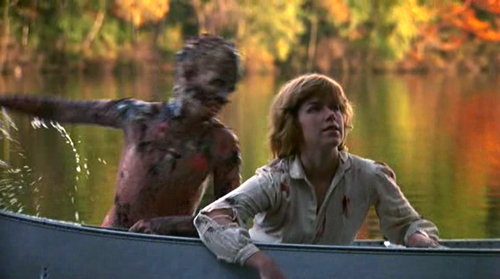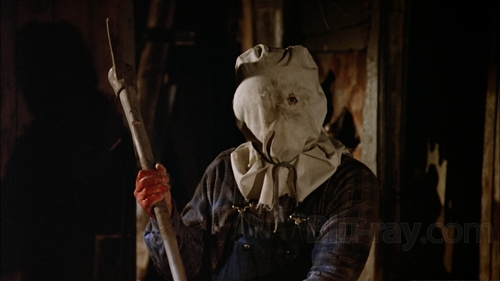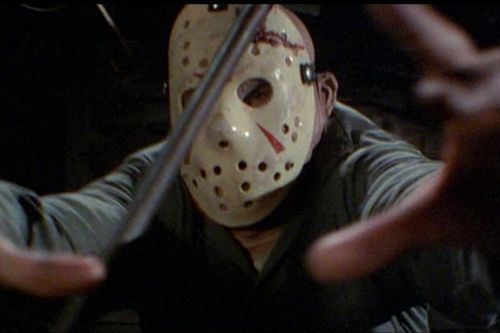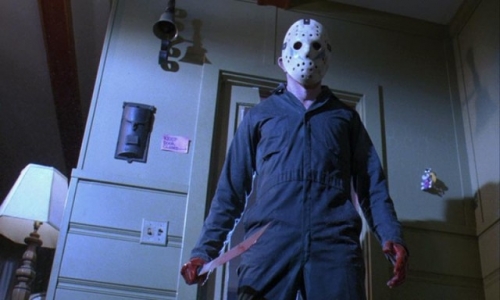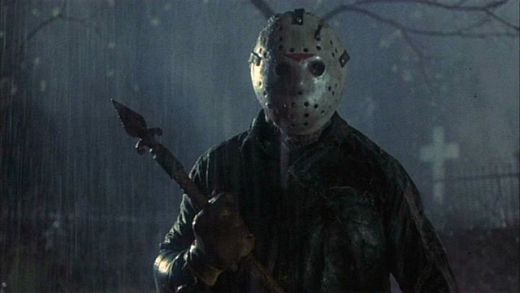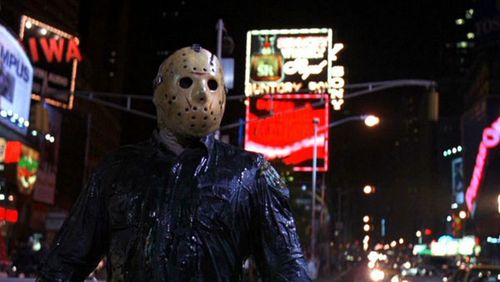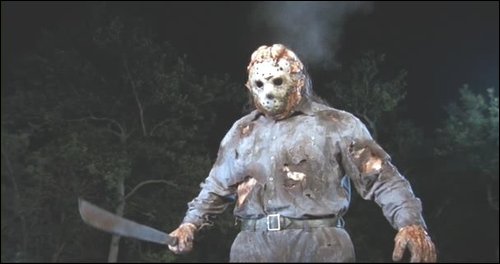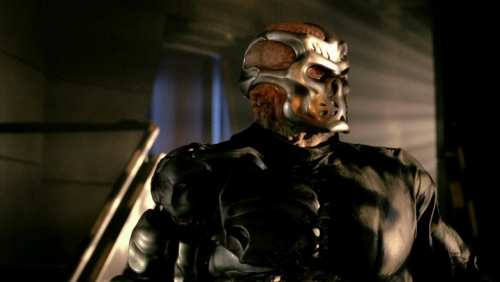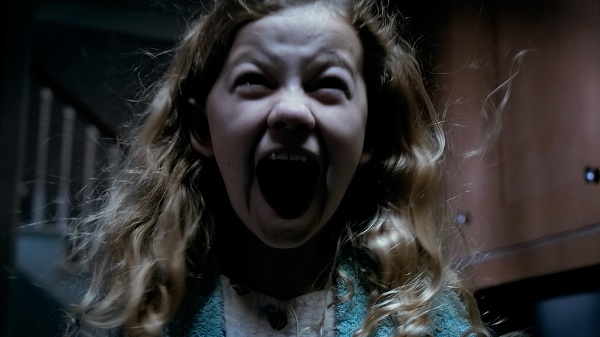One of the ways that you can gauge the success of a story is in the strength of it’s villain, or more specifically it’s antagonist. A successful and memorable villain is something that can always make or break a good narrative, because when we follow a story-line, there has to be someone or something driving the tension. A lot of the greatest villains that we’ve ever seen have not only effectively filled their role in a story-line, but have also become the thing we’ll enjoy and remember the most in them. Cinema has given us a great variety of memorable villains over the years, and some of the best ones have not only stood out in their own films, but have transcended out into our pop culture in general. I guarantee that the majority of Halloween costumes that are going to be worn in the next week are going to be based off famous movie villains. Take a count next time at a Halloween party and see how many Draculas, or Darth Vaders, or Jason Voorhees you can spot in the room. And it’s understandable; we as an audience love villains. They are usually the most interesting characters and, depending on how diabolical they are, the most entertaining. Actors often say that they enjoy playing the villain more than the hero, because it allows them to indulge in some of the baser aspects of the humanity. In other words, it feels good to act evil.
So, as part of this Halloween season, I would like to share my own list of favorite villains. Interestingly, after looking through them all, I noticed that not all of them are particularly scary characters or overtly mean-spirited. The reason why I chose these characters is because they were the ones that left the biggest impression on me, and were part of the reason why I enjoy their individual films so much. Mainly, these are the villains that I just love to hate. Some are pretty obvious choices, while others might surprise you. I’m was also surprised how so many of the characters on this list also start off seeming so normal at first, until you start to peel the layers back. I think that’s a character development that I enjoy seeing the most; darkness hiding in plain sight.
But before I delve into the list itself, I want to share some of the villains that didn’t make the list that are still worth mentioning: The Wicked Witch of the West (Wizard of Oz), Darth Vader (Star Wars), Hannibal Lecter (The Silence of the Lambs), John Doe (Seven), Reverand Powell (The Night of the Hunter), Cruella deVil (101 Dalmatians), Nurse Ratched (One Flew Over the Cuckoo’s Nest), Saruman (The Lord of the Rings), Max Cady (Cape Fear, both versions), Hans Gruber (Die Hard), Voldemort (Harry Potter series), Annie Wilkes (Misery), and Frank Booth (Blue Velvet). Now, here’s my list for you to read and rip apart if you wish.
10.
MOLA RAM from INDIANA JONES AND THE TEMPLE OF DOOM (1984)
Played by Amrish Puri
Here’s the first choice that may surprise some of you. Of all of the villainous characters in the George Lucas stable, how can I choose this character over Darth Vader? The truth is that Darth Vader may be a great villain and a great character in general, but he never scared me as a child. Mola Ram did. Because of that, he left a much bigger impression on me and to this day, I still enjoy seeing this character every time I watch the movie. Unarguably the best villain in the entire Indiana Jones franchise, Mola Ram stands out because he seems to be the very personification of unchecked evil. His evil nature is shown most clearly in how he holds power over his cult of followers and in how he has exploited everyone towards his dark ambitions; including enslaving children. He even turns Dr. Jones evil at one point, which is quite an accomplishment in itself. Surprisingly, for such a memorable villain, he actually has very little onscreen time. His first appearance doesn’t happen until halfway through the movie, but man what an entrance. Indian actor Amrish Puri makes the most of his limited scenes and steals every moment he’s in. Plus, no one has looked more badass pulling a living heart out of someone’s chest.
“Kali Ma. Kali Ma.”
9.
NOAH CROSS from CHINATOWN (1974)
Played by John Huston
Here’s an example of a villain whose true evil nature is hidden below the surface. Chinatown is a great throwback to classic noir mysteries, and for the majority of the film, we follow along as Detective Jake Gittes starts to believe that energy supply tycoon Noah Cross isn’t the fine upstanding businessman that he pretends to be. But, when the film reaches the final act, we learn that Mr. Cross has done far more horrible things than just illegal business practices. We discover that he had raped his own daughter in the past and that a child out of incest was born as a result. Jake confronts Noah about it, and it turns out he feels no shame about what he’s done. In one of the greatest villainous lines ever delivered, Noah Cross explains the way he sees the world by saying, “Most people never have to face the fact that at the right time and the right place, they’re capable of ANYTHING.” The scary thing about the character though is that he’s become so powerful and influential, that he’s now untouchable, and will probably go on doing his deprave things unimpeded until he dies comfortably at an old age. A lot of credit goes to director turned actor John Huston for portraying that aspect of the character so chillingly. Huston was an imposing figure both on and off the screen, and he makes Noah Cross one of the cinemas great villains in a terrifying yet subtle way.
“It’s not worth it Mr. Gittes. It’s really not worth it.”
8.
COLONEL HANS LANDA from INGLORIOUS BASTERDS (2009)
Played by Christoph Waltz
You know you’re a memorable antagonist when you appear in the same film as Adolf Hitler, and you’re still considered the main villain. That’s the case with Hans Landa, aka the “Jew Hunter”, in Quentin Tarantino’s WWII epic. Brilliantly portrayed by Christoph Waltz in an Oscar-winning performance, Col. Landa is one of the greatest examples of portraying a character in the opposite way than what is usual. The majority of time, Nazis are appropriately portrayed as sadistic monsters; best example being Amon Gothe in Schindler’s List, played brilliantly by Ralph Finnes. What defines Hans Landa, however, is his pleasantness. He’s polite and courteous, even when he’s committing the most evil of acts. Behind that beaming smile we know there lies the mind of a true monster. He lures you in with his pleasant personality, but the moment he turns silent and the smile disappears, that’s when you know you’re in trouble. The only time he reveals his true nature in the movie is the scene where he chokes the double agent actress to death after returning her shoe, and of course once the deed is done, he smiles again like nothing has happened. Both Christoph Waltz and Quentin Taratino deserve a lot of credit for creating a villain like this that changes around character archetypes, and as a result, created a true original in Hans Landa.
“Ooooo, that’s a BINGO. Is that how you say it?”
7.
MALIFICENT from SLEEPING BEAUTY (1959)
Voiced by Elanor Audley
Disney Animation can be credited with creating many of the most memorable villains in cinema history, and it’s mainly due to the fact that their dark villains stand out a lot more in comparison to the usual light-heartedness commonly found in a Disney film. In many cases, that contrast has led to some notably sinister villains and villainesses; some of whom have inspired some of our darkest nightmares in our childhood. And if there was a Disney villain that you could pick out as the gold standard of the bunch, it would be Malificent. The evil fairy from Disney’s Sleeping Beauty has not only become a memorable villain in her own right, but she has gone on to influence many other villains in animated films in the years since. Anytime when you see an animated film’s villain transform into a giant monster at the film’s climax, it calls back to Malificent’s own transformation into a fire-breathing dragon in the finale of Sleeping Beauty. That’s an impact that few other villains have had, and Malificent deservedly continues to be popular to this day. Outside of her film appearance, Malificent has gone on to become the unofficial arch-nemesis of the whole Disney universe, thanks to highlighted roles in things like the Fantasmic show at Disneyland and in video games like Kingdom Hearts. To be considered the top dog in a rogues gallery as impressive as Disney Animation’s, it’s understandable to see how impactful Malificent has been.
“Well, isn’t this a pleasant surprise. I set my trap for a peasant, an lo, I catch a prince.”
6.
KING EDWARD I (LONGSHANKS) from BRAVEHEART (1995)
Played by Patrick McGoohan
Some of the villains on this list have made it here because they scared me as a child while other have made it because I find them so fascinating. In terms of Longshanks, however, he made this list just because I find him so entertaining. The movie Braveheart undoubtedly takes a lot of liberties with history in service of the story, and the portrayal real historical figure King Edward I is no different. The reason why the film works is that it is unashamed about being a romanticized account of history, through both the writing of the story and the portrayal of it’s characters. Longshanks, as he’s called frequently in the film, is probably the most transparent, mustache-twirling villain on this list, but he earns his place for just being so overt and over-the-top in his evilness that he becomes entertaining. Actor Patrick McGoohan is a delight to watch in the role, and he takes such pleasure in being so diabolical. A lot of the character comes out in the writing as well. Every line that Longshanks delivers is a snarky put-down to someone else, whether it’s directed at William Wallace or to his own king’s council. One of the reasons why I hold the film Braveheart in such high regard is because well Longshanks works as a villain. And only the greatest villains are the ones that command repeat viewings.
“The trouble with Scotland, is that it’s full of Scots.”
5.
HAL 9000 from 2001: A SPACE ODYSSEY (1968)
Voiced by Douglas Rain
HAL 9000 is one of the most unusual villains to have ever been conceived for a film. What makes him such a frightening villain is the fact that he is all intelligence and no emotion, which as it turns out leads to the impulse to murder in this film. HAL 9000 was created by scientists to perform all of the higher functions of a space shuttle while it’s crew hibernates on the way to their mission near the orbit of Jupiter. Unfortunately, he was programmed to make sure that nothing got in the way of completing the mission. With out much wiggle room or clarity in that order, HAL saw the crew itself as a threat to the mission’s success, and he begins killing them off one by one by cutting their life supports. Only Astronaut Dave Bowman survives and he promptly shuts down HAL before he can do any more damage. It’s amazing how director Stanley Kubrick could turn such a featureless and zero personality character into such a compelling villain, but the trick works to perfection here. HAL 9000’s cold, emotionless voice helps in selling the chill factor, as does the omni-presence of the unblinking red eye. And given our increasing reliance today on electronic devices in our everyday lives, the concept of a dangerous computer mind like HAL’s doesn’t seem that far fetched nowadays.
“I’m sorry Dave. I cannot do that.”
4.
MRS. ELEANOR ISELIN from THE MANCHURIAN CANDIDATE (1962)
Played by Angela Lansbury
It’s a chilling thought to think that you greatest enemy in the world could be your own mother. But that’s the case in the brilliant John Frankenheimer film, The Manchurian Candidate. The film centers around a multi-layered conspiracy to assassinate a Presidential candidate that includes brainwashed POW soldiers, Chinese communists spies, a firebrand Senator that’s obviously inspired by Joseph McCarthy, and the Queen of Diamonds. At the center of the conspiracy is Golden Boy war hero Raymond Shaw (Laurence Harvey), who has been displaying unusual behavior since his return home. When the mystery starts to unravel, we soon learn that the one pulling all the strings is non other than Raymond’s mother, Elanor, who is married to the fiercely anti-communist Senator and Vice-Presidential candidate John Iselin. In one of the greatest casting against types ever, Angela Lansbury portrays a truly terrifying mother-figure in Elanor Iselin. She creates a truly nasty character by balancing the motherly aspects of the character with the more vitriolic aspects. She also portrays the Oedipal aspects of the relationship with her son in very fearless, and ultimately grotesque ways. In a political thriller where political games leads to a lot of people doing bad things, Elanor Iselin stands out as a truly dangerous and ruthless manipulator.
“I wanted a killer from a world filled with killers and they chose you.”
3.
THE JOKER from BATMAN (1989) and THE DARK KNIGHT (2008)
Played by Jack Nicholson (Batman) and Heath Ledger (The Dark Knight)
I’m cheating a little bit here, by selecting two different versions of the same character. It was hard to pick just one, so I thought it was better to put the them together. The Joker is not only one of the greatest cinematic villains, but also arguably the greatest comic book villain of all times. A brilliant counter-point figure to the caped crusader, Batman, The Joker has that special ability to be laugh-out-loud funny one minute and then horrifically frightening in the next. There have been 4 cinematic takes on the character (special mention to Cesar Romero in the 1966 film, and Mark Hamill in the 1993 animated feature Batman: Mask of the Phantasm.) But the two most notable version are the ones played by Jack Nicholson and Heath Ledger. Jack Nicholson seemed to be born to play the part, and his performance in the Tim Burton directed feature proves that to be true. Albeit, he plays up the funnier aspects of the character a little more, but when the movie calls for it, he can be truly terrifying in the role. Heath Ledger, however, was not the choice people had expected when director Christopher Nolan cast him in the role for The Dark Knight, and he had to overcome a lot of doubt in the audience’s eyes. Not only did he prove us all wrong, he set the bar even higher with his performance, creating one of the most terrifying villains to ever appear on screen. Both versions have their merits, but I might rank Heath Ledger’s a little higher, just because of the impact he made. That’s not to say that Jack’s version is any less fun to watch. The great thing about the Joker is that like Batman, he will continue to be remade and reinterpreted in both films and comics for years to come.
“Wait until they get a load of me.”
“You want to know how I got these scars?”
2.
NORMAN BATES from PSYCHO (1960)
Played by Anthony Perkins
Like many of the other villains on this list, Norman Bates doesn’t come across as purely evil, until you start to look deeper. Taking the term Mama’s boy to the ultimate extreme, Norman has become one the greatest villains in cinema history mainly because of how compelling his character is. He seems so normal and harmless at first, which helps the audience to identify with him right away; that is until we see what he’s really capable of. Director Alfred Hitchcock always enjoyed subverting conventional wisdom and Hollywood archetypes, and here he transforms the boy next door into a homicidal killer. We don’t see Norman do a lot of killing in the movie, but that’s not what makes him terrifying. It’s the psychosis behind the character that makes him a chilling villain. Anthony Perkins pulls of that balancing act to perfection. His charming personality in the first half of the film fools us into believing that he is no where near capable of committing murder and that the homicidal one is really his mother. That notion proves wrong once we see his mothers rotting corpse in the basement and him in his mother’s dress with a butcher knife. The most terrifying aspect though is that Norman has progressively been loosing more of himself to his psychosis and that he’s developing a split personality based on his mom. The idea that he sits alone all day having a two way conversation with a rotting corpse is definitely enough to make anyone’s skin crawl and it definitely certifies his place among the most memorable villains ever.
“A boy’s best friend is his mother.”
1.
ALEX DELARGE from A CLOCKWORK ORANGE (1971)
Played by Malcolm McDowell
In most films, a villain will sometimes be a more compelling character than the main protagonist. In Stanley Kubrick’s A Clockwork Orange, the main protagonist just happens to be the villain. In this classic film, we are presented with probably the most compelling and memorable portrayal of a true psychopath, and the journey that his life takes. Alex is an unapologetic violent thug who terrorizes the streets of his hometown along with his gang of followers, whom he calls his Droogies. Much like the Joker, he also takes delight in doing the most horrible things, and never once feels guilty about it. He is just pure unchecked evil, which makes his villainy all the more unsettling to watch, especially considering how young he is; in the original novel, Alex is only a teenager. What makes Alex even more fascinating, however, is what happens to him once he becomes reformed in the latter half of the film. After being arrested, Alex volunteers for a new experimental treatment, which leaves him docile and unable to give in to his more baser instincts. As a result of this, he is unable to fight back, and all the people he has wronged start to take out their revenge in ever more increasingly violent ways. It’s as if Alex is a lightning rod for all evil actions in the world, and if he’s not the one doing it, then he’ll bring it out in even the most good-natured people around him. Malcolm McDowell plays both aspects of the character brilliantly and unlike most other villains, he makes Alex a villain we want to root for. I wonder what that says about humanity; that we value even the most extreme of anti-heroes, or that there’s evil instincts in every one of us that we enjoy seeing others act out. All of this is what makes Alex what I believe to be the best villain in movie history.
“I was cured alright.”
So, these are my choices for the greatest movie villains of all time. I hope that some of these picks are among yours as well. Out of all this, it’s clear that a great villain has to come from a great story, but that’s not always the case. Some mediocre story-lines can be improved upon if the villain is memorable enough. The worst thing that a movie can do is to make their antagonist weak and insignificant, even if their hero is a compelling one. Villains drive the tension of the film, so it’s essential to make them a worthwhile character. For me, the best villains are the ones that are unexpected and multi-layered. Overtly evil characters can work some of the time, but the ones that will frighten us more are the ones that are the most like us, which shows the thin line that we all walk between right and wrong. That’s what makes villainous characters such an integral part of our movie-going experience. We just enjoy watching characters being bad and loving it.
